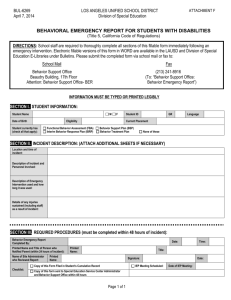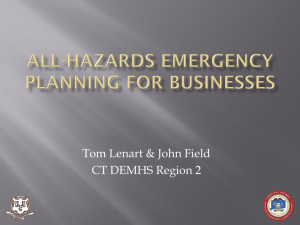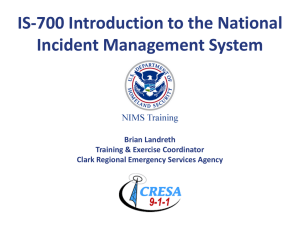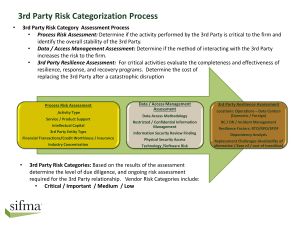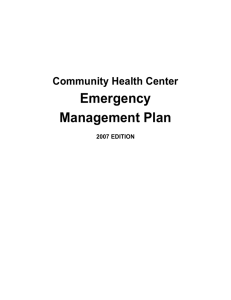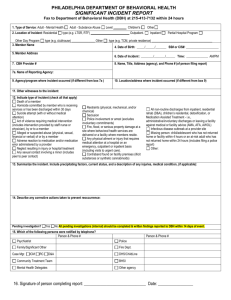Crisis and Emergency Management – the Leadership Challenge
advertisement
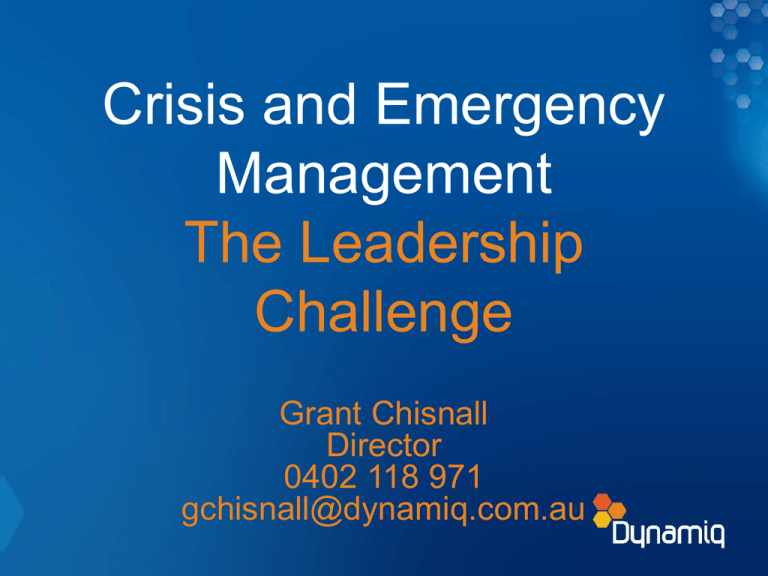
Crisis and Emergency Management The Leadership Challenge Grant Chisnall Director 0402 118 971 gchisnall@dynamiq.com.au Crisis and Emergency Management – The Leadership Challenge • • • • About Dynamiq Current Climate Business Resilience Leadership – Individual and Organisational Leadership – Prevention, Preparedness, Response and Recovery What we do Crisis & Emergency Management Travel Risk Management Strategic Security Remote Medical Recent Experience Current Climate = PRESSURE Business Resilience Ability to adapt quickly to evolving situations in a dynamic environment People Capability Process Systems What is an incident? What is an emergency? What is a crisis? What is an incident? An unplanned event that has the potential to threaten life, the environment or assets. If not controlled, an incident can escalate to an emergency and/or crisis. What is an emergency? A physical incident that threatens life, the environment, or property, but which on its own does not affect an asset’s long-term ability to do business. What is a crisis? Loss of management control resulting in an actual or potential threat to an assets long-term ability to do business due to the impact on the operability, image, reputation and liabilities of the company. Characteristics of a Crisis • Misinformation • Confusion • Incomplete information • Underestimated • Intense pressure • Friction What is Leadership? What is Management? “Leadership is the art of achieving more than the science of management says is possible“ Colin Powel, retired US General and Chief of Staff Crisis Management Leadership Management (Process) Success The Comprehensive Approach Prevention Preparedness Identify and minimise Plan, train, test Recovery Continue Business Response Information, contain, control communicate Prevention 1. Put your people first 2. Know your operating environment 3. Establish your resilience framework Preparedness 1. Invest in your people 2. Prepare yourselves – have the tough discussions – What If? 3. Practice first class intensity Response 1. If in doubt call it out 2. Right People at the Right Time to make the Right Decisions 3. Set clear objectives 4. Trust and empower your team 5. Communicate – Communicate – Communicate Recovery 1. Recovery starts from the point of incident 2. Human, Environment, Asset, Financial 3. Communicate, Communicate, Communicate Conclusion The success of a crisis leader is measured in terms of their ability to influence or motivate key audiences towards a specific behaviour or belief. Leading During Times of Crisis, Lynn Rolston and Denise McNerney, CEOs of IBossWell Grant Chisnall Director 0402 118 971 gchisnall@dynamiq.com.au



